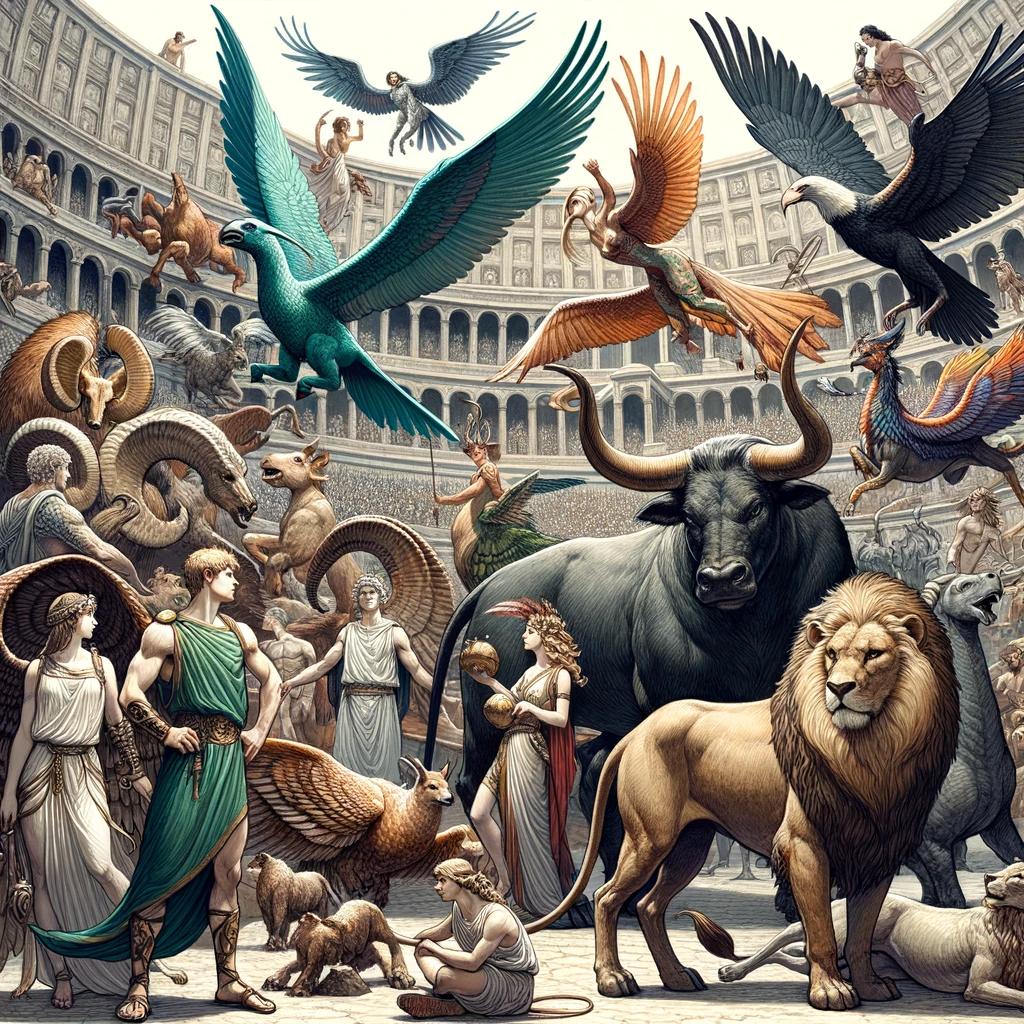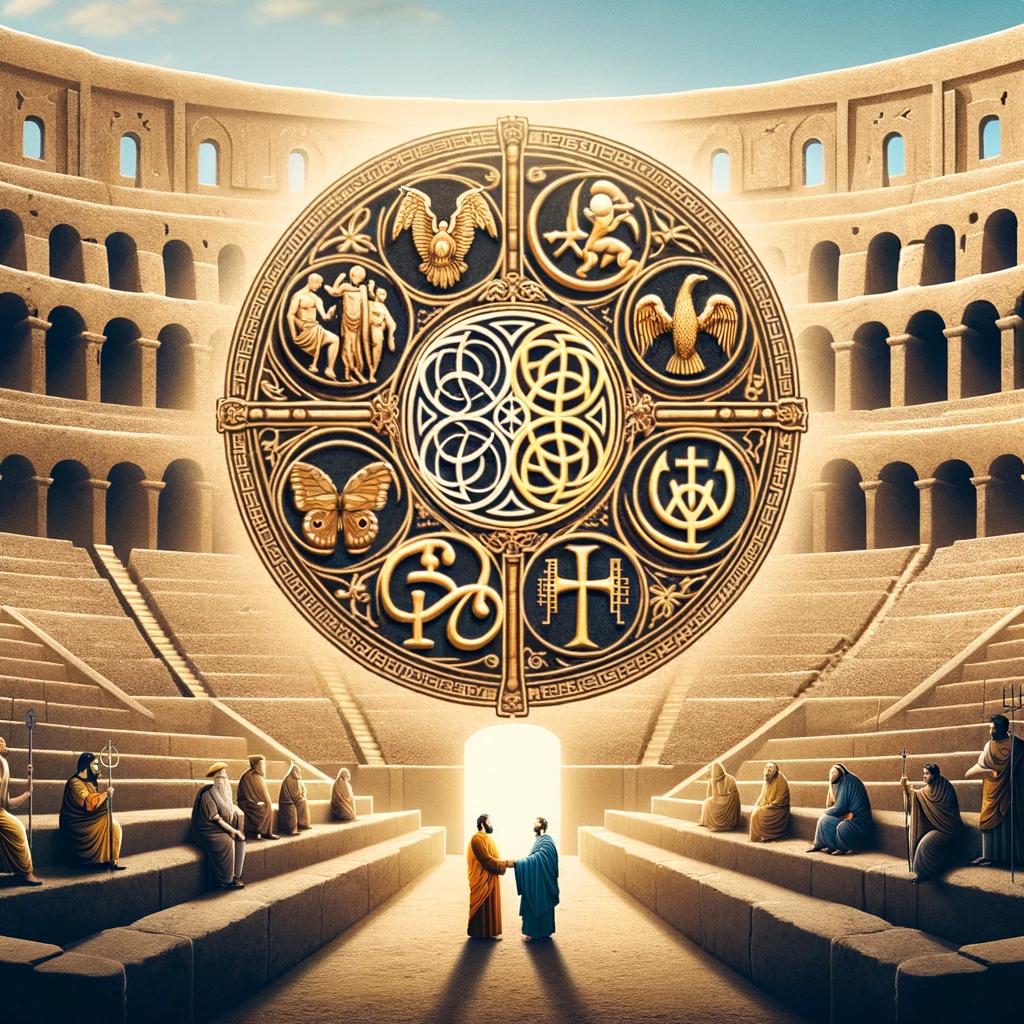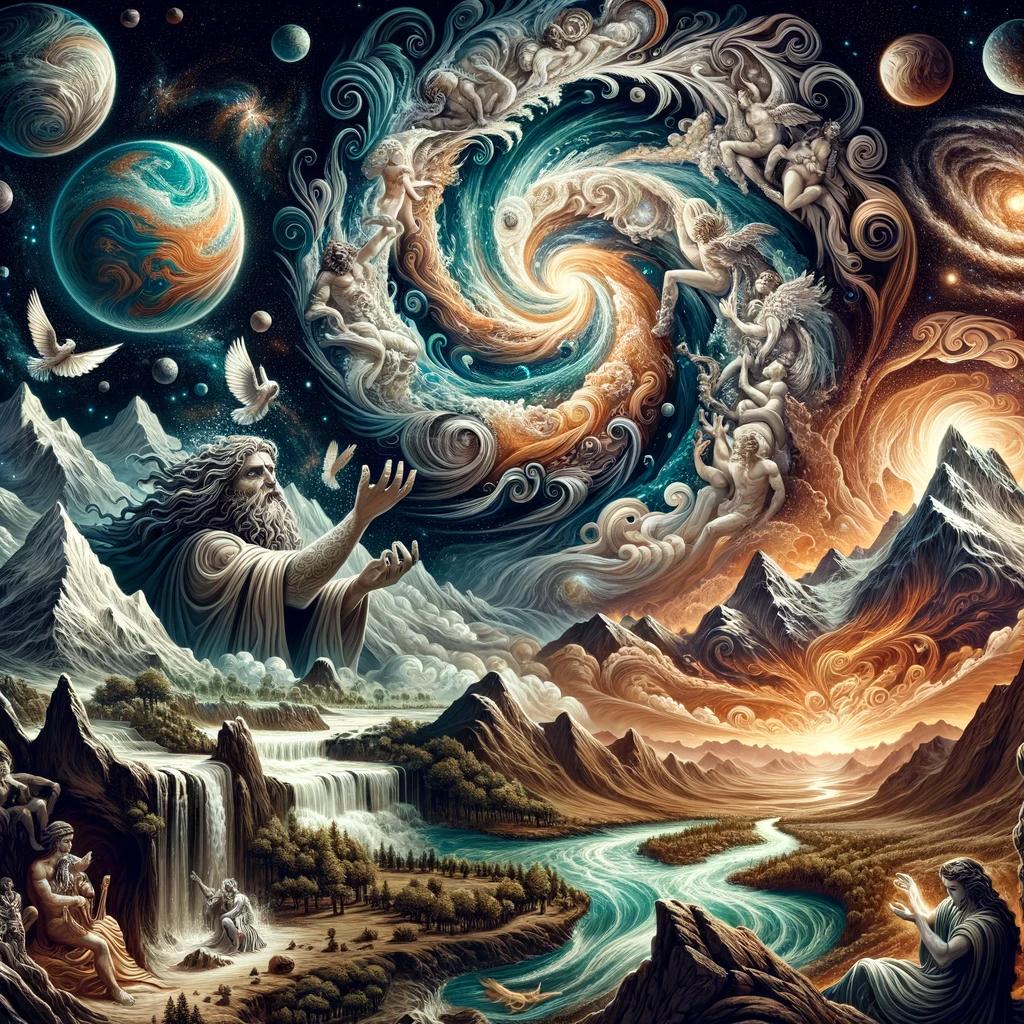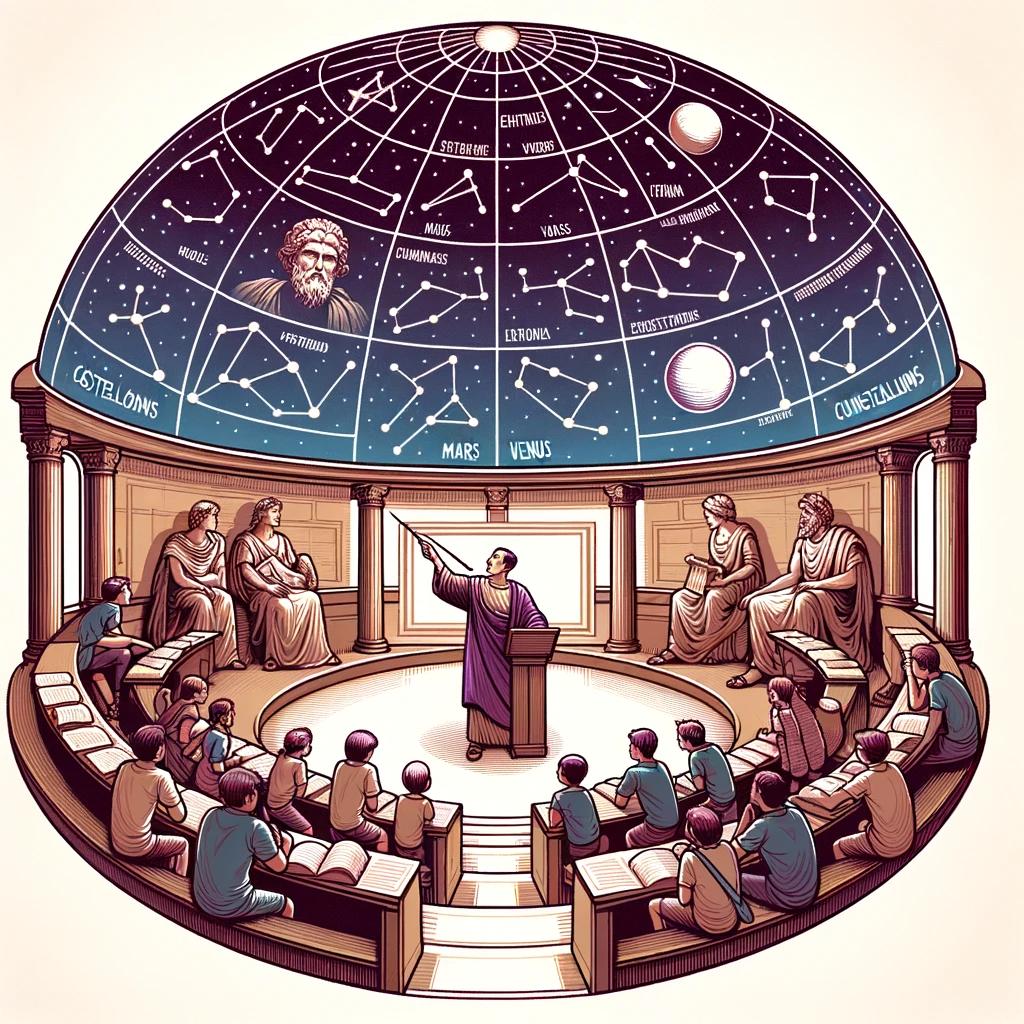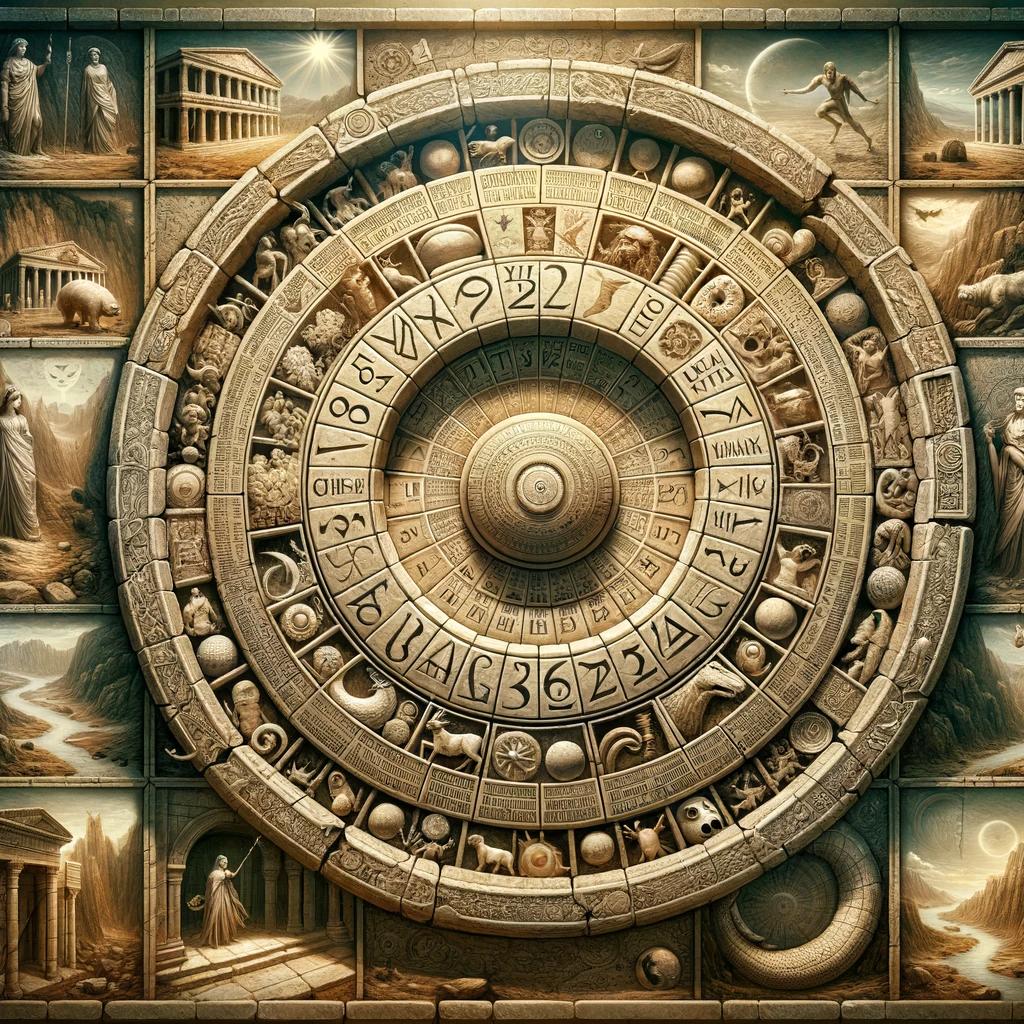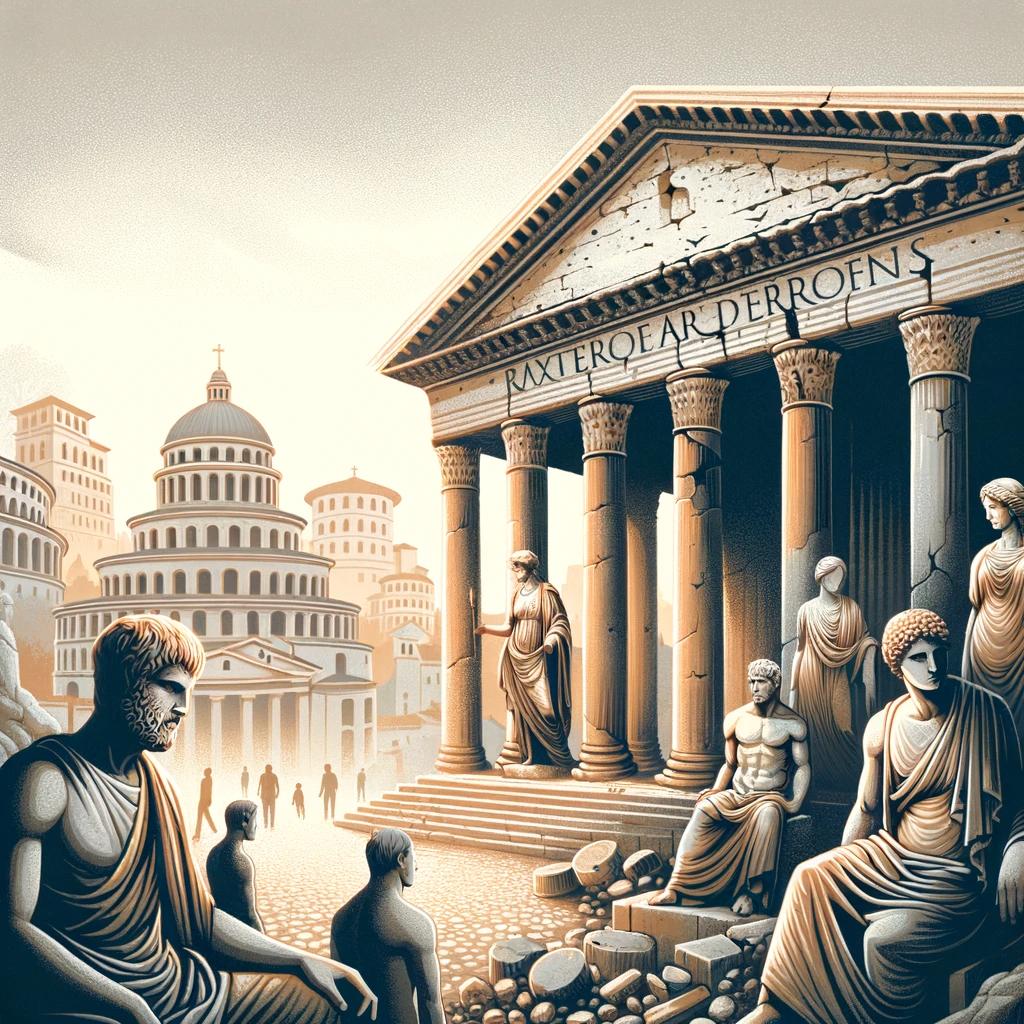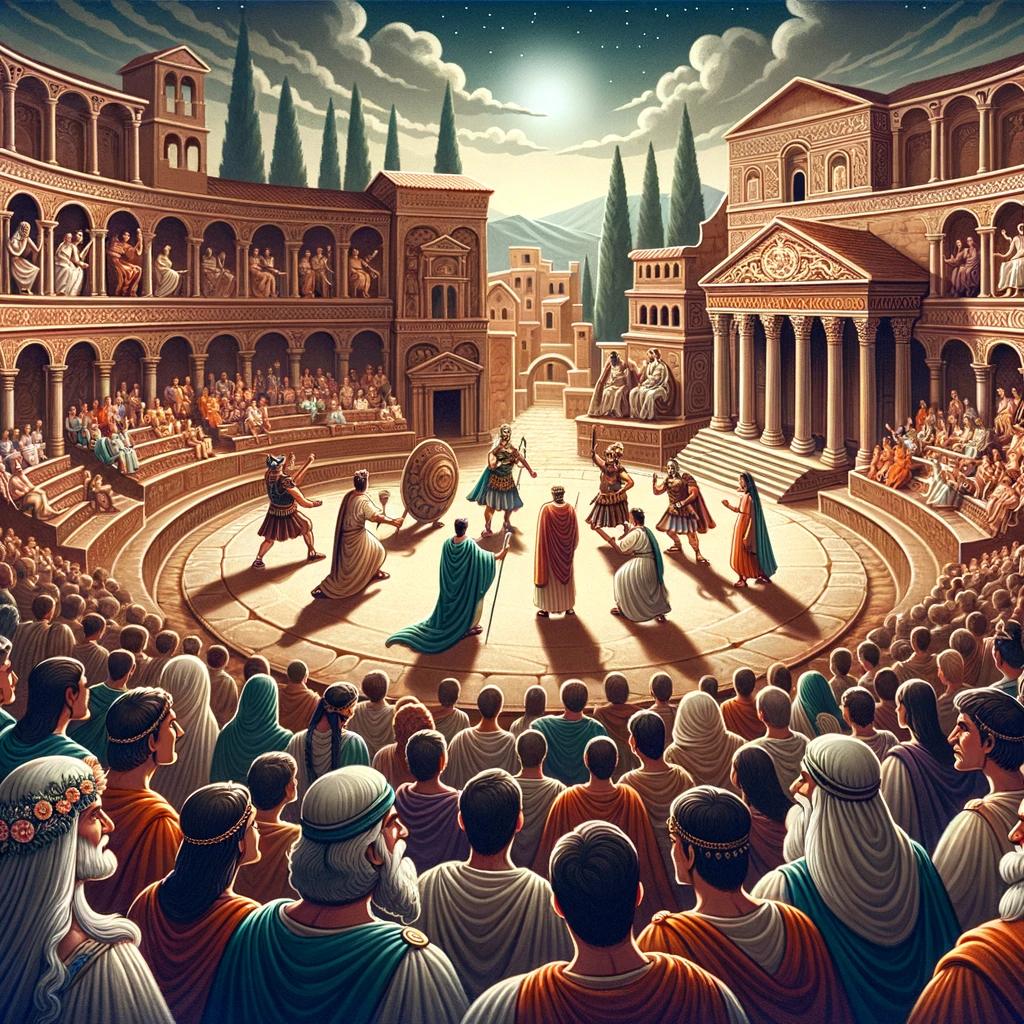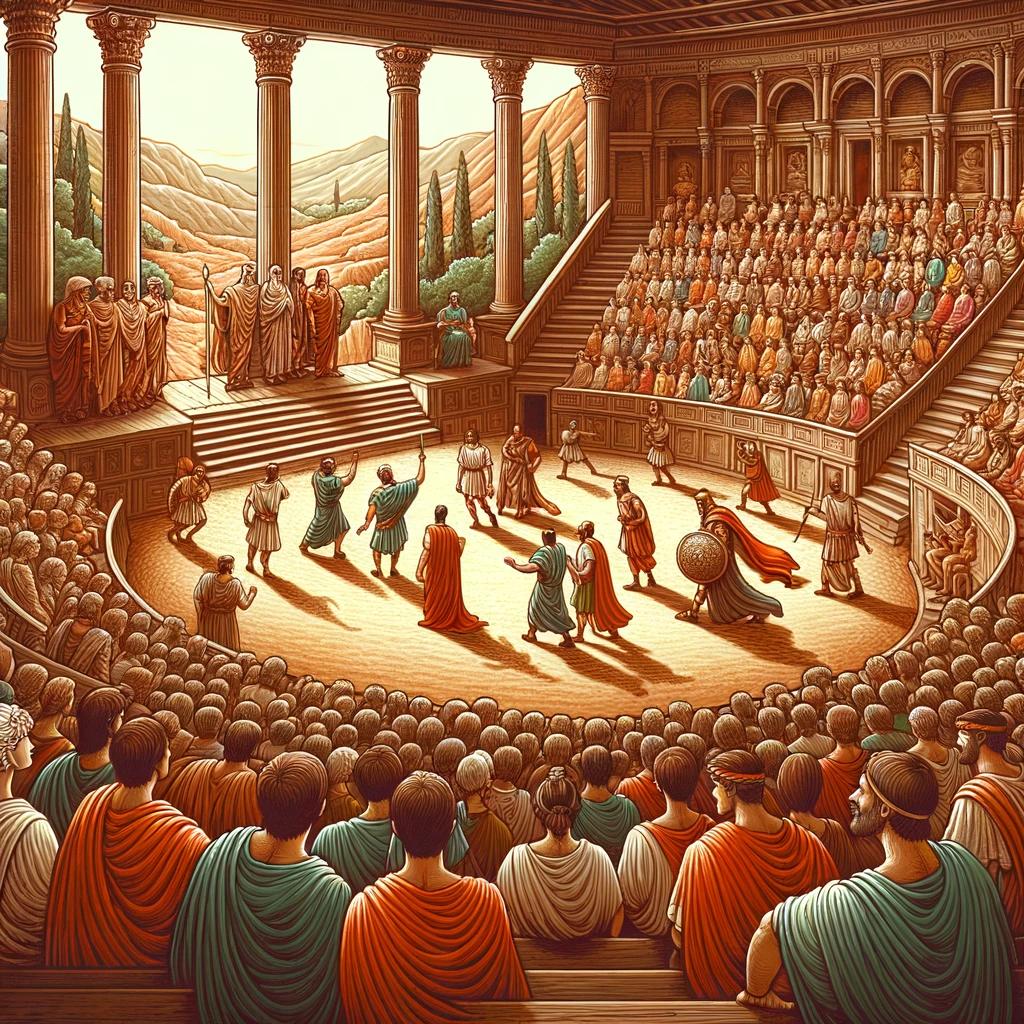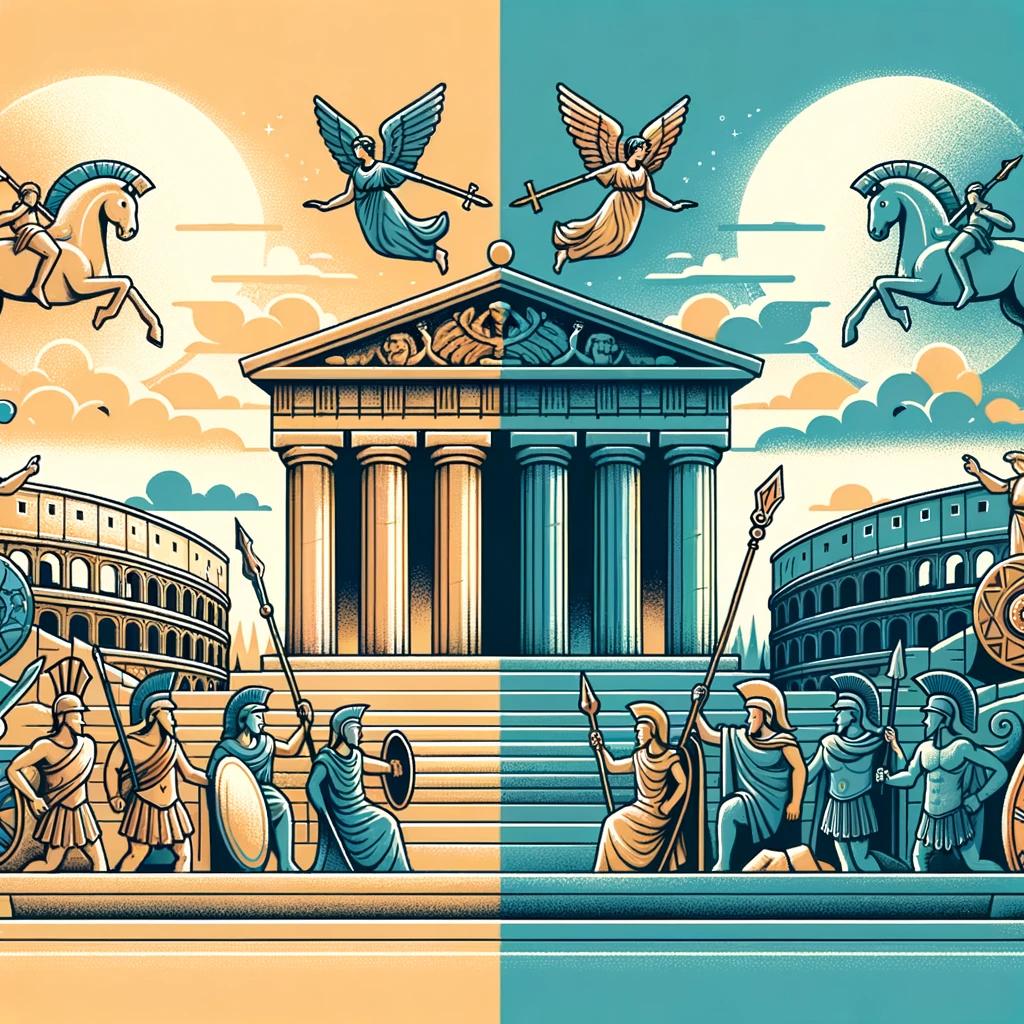Discover the Enchanting World of Mythological Roman Creatures
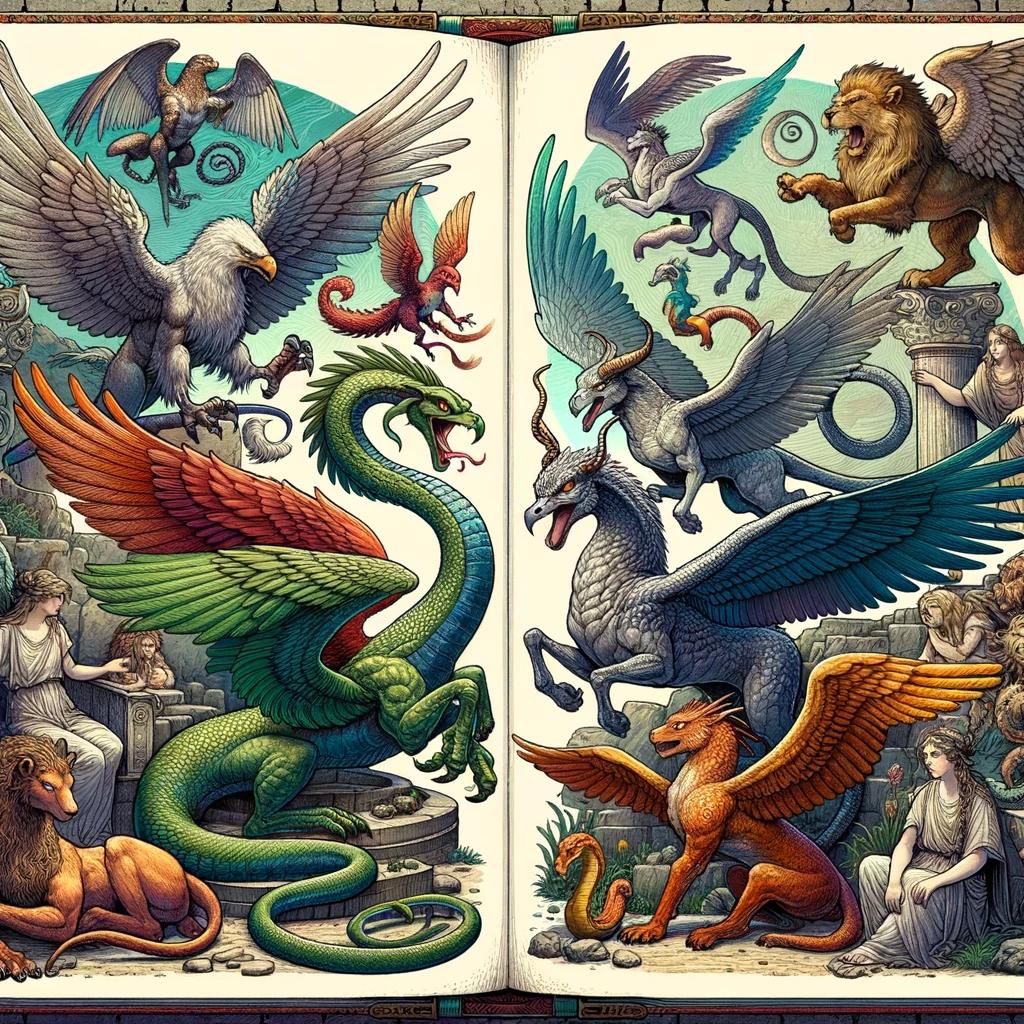
Mythological Roman creatures are a fascinating part of ancient Roman mythology. Influenced by Greek mythology, these mythical beings captivate with their unique characteristics. From fearsome creatures like the Minotaur and Basilisk to mystical beings like Strix and Genius Loci, Roman mythology is filled with a diverse range of mythical creatures.
Depicted in various forms of art and literature, these creatures play a significant role in shaping Roman culture and history. Exploring their origins, classifications, and cultural significance, this article delves into the captivating world of mythological Roman creatures.
Ancient Roman Mythology
Ancient Roman mythology is a rich and fascinating collection of stories, beliefs, and legends that shaped the worldview of the Roman people. It draws heavily from its predecessor, Greek mythology, but also developed its own distinct pantheon and mythical creatures.
Origins of Roman Mythology
The roots of Roman mythology can be traced back to the early inhabitants of ancient Italy, such as the Etruscans and the indigenous tribes of Latium. These early cultures had their own gods and legends, which gradually merged with Greek mythology through cultural exchanges and conquests.
Influence of Greek Mythology
The influence of Greek mythology on Roman mythology cannot be overstated. The Romans adopted and adapted many Greek myths, gods, and heroes, often giving them new names and attributes.
This syncretism resulted in a unique blend of Greek and Roman mythological traditions.
Roman Gods and Goddesses
The Roman pantheon consisted of an extensive array of gods and goddesses, each representing different aspects of life, nature, and human endeavors. From Jupiter, the king of the gods, to Venus, the goddess of love and beauty, Roman deities played vital roles in the religious and cultural life of the ancient Romans.
Roman Mythical Creatures
Roman mythology also featured a wide range of mythical creatures. These creatures often inhabited the realms of nature, the underworld, and the imaginations of the Roman people. From the cunning and shapeshifting fox-like creature called the Cacus to the fearsome fire-breathing Chimera, each creature had its own distinct characteristics and significance in Roman folklore.
Classification of Mythological Creatures
The world of Roman mythology is teeming with a rich diversity of creatures, each with its own unique characteristics and attributes. These mythological creatures can be classified into different categories based on their roles and characteristics within Roman mythology.
Legendary Creatures in Roman Mythology
- Centaurs: Half-human, half-horse beings known for their strength and wisdom.
- Crocotta: A mythical dog-lion hybrid creature with sharp fangs and the ability to mimic human voices.
- Onocentaur: A creature with the upper body of a man and the lower body of a donkey.
- Monoceros: A legendary beast with the body of a horse, the tail of a lion, and a single horn on its forehead.
Spirits and Beings of Roman Mythology
- Genius Loci: Protective spirits associated with specific locations or places.
- Lemures: Malevolent spirits of the restless dead who were believed to haunt houses and cause mischief.
- Hippopodes: Creatures with the lower bodies of horses and the upper bodies of humans.
- Oeonae: Nymphs of mountains and wild places, known for their beauty and connection to nature.
The Most Famous Roman Mythological Creatures
- The Minotaur: A fearsome creature with the head of a bull and the body of a man, confined within the labyrinth of King Minos.
- The Basilisk: A serpent-like creature with a deadly gaze and the ability to kill with its venomous breath.
- The Strix: A nocturnal bird associated with dark magic and often depicted as a vampiric owl.
- Fire-Breathing Giants: Gigantic creatures known for their ability to breathe out destructive flames.
- Nymphs and Fauns: Nature spirits and woodland creatures associated with fertility, beauty, and mischief.
These classifications provide a framework for understanding the diverse array of mythological creatures that populate Roman mythology.
From legendary beings to spirits and well-known creatures, they all contribute to the captivating tapestry of Roman folklore and continue to fascinate us in the modern age.
Notable Mythological Creatures
Embark on a journey through the captivating world of notable mythological creatures in Roman mythology. These creatures, deeply rooted in ancient Roman culture, leave a lasting impression with their intriguing stories and unique characteristics.
The Minotaur
One of the most famous mythological creatures, the Minotaur, is a half-human, half-bull creature. Born from the union of Queen Pasiphae and a majestic white bull, the Minotaur was a fearsome beast that dwelled in the labyrinth of Knossos.
Theseus, the legendary hero, ventured into the labyrinth to defeat the Minotaur and free the people of Athens.
The Basilisk
The Basilisk, often referred to as the “King of Serpents,” is a legendary creature with the body of a serpent and the head of a crowned rooster. This venomous creature had the power to petrify its victims with a single gaze.
Its existence struck fear into the hearts of many, and it became a symbol of danger and evil in Roman folklore.
The Strix
The Strix, a mythical creature resembling an owl or a vampire, held a prominent place in Roman mythology. Legend spoke of these nocturnal creatures that attacked unsuspecting victims, draining them of their blood or life force.
The Strix embodied darkness and chaos, often associated with witchcraft and supernatural powers.
Genius Loci
The concept of Genius Loci, meaning “spirit of the place,” featured in Roman mythology. It represented the protective spirits believed to inhabit and guard specific locations, such as homes, towns, or natural landscapes.
The Genius Loci served as a reminder of the sacred connection between humans and their surrounding environment.
Fire-Breathing Giants
- The Gigantes, fierce creatures with enormous strength and colossal size, were born from the blood of Uranus.
- The Laestrygonians, a cannibalistic tribe of giants known for their aggression and terrifying appearance.
- The Cyclopes, one-eyed giants who forged powerful weapons for the gods, including Zeus’ thunderbolts.
Nymphs and Fauns
Enchanting and ethereal, nymphs were divine spirits of nature closely associated with rivers, forests, and mountains.
They were often depicted as beautiful maidens with supernatural abilities. Fauns, on the other hand, were mischievous creatures with the upper body of a man and the lower body of a goat.
These playful beings delighted in the company of nymphs and frequently appeared in Roman folklore.
Mythological Creatures in Roman Art and Literature
The realm of Roman art and literature is teeming with captivating depictions and interpretations of mythological creatures. These magnificent beings played a significant role in the creative expression and cultural narrative of ancient Rome.
Depictions in Ancient Roman Sculptures
Ancient Roman sculptures showcase the exquisite craftsmanship and attention to detail in portraying mythological creatures. The sculptors skillfully captured the essence of these beings, immortalizing them in marble and bronze. From the ferocious Minotaur to the graceful Nymphs, these sculptures bring the mythological realm to life.
Mythological Creatures in Roman Paintings and Mosaics
Roman paintings and mosaics served as vibrant canvases for mythological creatures. These artworks vividly depicted scenes from mythology, often featuring majestic creatures such as the Basilisk or the legendary Fire-Breathing Giants.
The intricate details and vibrant colors in these artworks added depth and splendor to the mythology of ancient Rome.
Role of Mythological Creatures in Roman Literature
Roman literature abounds with tales that intertwine the lives of humans and mythological creatures. These creatures served as powerful symbols and catalysts for storytelling. From the mischievous Fauns to the wise and mysterious Strix, they brought intrigue and wonder to Roman literary works, serving as allegories for various aspects of human existence.
- Ancient Roman sculptures bring mythological creatures to life, capturing their essence with meticulous detail.
- Roman paintings and mosaics serve as vibrant canvases for the depiction of mythological creatures.
- Mythological creatures play a significant role in Roman literature, serving as powerful symbols and catalysts for storytelling.
Historical Context of Roman Mythological Creatures
The historical context surrounding Roman mythological creatures offers insights into the cultural and societal significance of these mythical beings.
Understanding the influence of Roman mythology within the context of the Roman Empire, its impact on world history, and its lasting influence on European and Western culture enhances our appreciation for these fascinating creatures.
Roman Empire and Mythology
During the height of the Roman Empire, mythology played a vital role in shaping Roman society and governance. Roman emperors often associated themselves with deities, attributing their authority to divine origins.
The interpretation and depiction of mythological creatures were intertwined with the religious and political fabric of the empire. Myths were used to reinforce and legitimize Roman power, and these mythical creatures served as symbols of strength, wisdom, or cautionary tales.
Roman Mythology in World History
The mythological narratives of ancient Rome spread beyond the borders of the empire, influencing neighboring civilizations and cultures. The expansion of the Roman Empire facilitated the transmission of Roman myths and creatures to various regions, leaving a lasting impact on world history.
As Roman legions conquered new territories, they introduced their mythological beliefs, blending them with local lore. This cultural exchange shaped the development of mythology in societies throughout Europe, the Middle East, and North Africa.
Influence on European and Western Culture
Roman mythology and its mythical creatures continued to exert a profound influence on European and Western culture long after the decline of the Roman Empire. The Renaissance period witnessed a revival of interest in classical mythology, inspiring artists, writers, and scholars to explore and reinterpret Roman myths.
Famous works of art, literature, and architecture featuring mythological creatures, such as Botticelli’s “The Birth of Venus” and Michelangelo’s Sistine Chapel ceiling, exemplify the enduring impact of Roman mythology on European artistic traditions.
Furthermore, the presence of Roman mythological creatures can be found in contemporary popular culture, including films, literature, and video games. Their enduring appeal and representation in modern media serve as a testament to their ongoing relevance and cultural significance.
In conclusion, exploring the historical context of Roman mythological creatures allows us to delve into the intricate connections between mythology, history, and culture. By understanding their role within the Roman Empire, their influence on world history, and their enduring impact on European and Western culture, we gain a deeper appreciation for the rich tapestry of myth and legend that surrounds these captivating creatures.
Roman Mythology vs Greek Mythology
Roman mythology and Greek mythology share many similarities as well as distinct differences. Both are ancient mythologies that have influenced Western culture and continue to captivate people’s imaginations. This section explores the correlations, interactions, and developments between Roman and Greek mythological creatures.
Similarities and Differences
- Both Roman and Greek mythologies revolve around a pantheon of gods and goddesses, each with their unique roles and attributes.
- While many Greek and Roman deities are similar in nature, they often have different names and minor variations in their stories and character traits.
- Mythological creatures, such as centaurs, sirens, and harpies, are found in both Greek and Roman mythologies, although they may differ in their depictions and interpretations.
- One significant difference between the two mythologies is the role of Rome as an empire and its assimilation of Greek culture, resulting in the adaptation and integration of Greek mythological elements into Roman mythology.
Interactions and Shared Mythological Creatures
- Due to the historical and cultural connections between Ancient Greece and Ancient Rome, there was frequent interaction between their mythologies.
- Some mythological creatures, such as the gods and goddesses, heroes, and monsters, are shared between Roman and Greek mythology, often with slight variations in their stories and attributes.
- For example, Zeus and Jupiter are equivalent deities in Greek and Roman mythology, while Aphrodite and Venus represent the goddess of love and beauty in their respective mythologies.
- These shared mythological creatures demonstrate the cultural links and influences between the two ancient civilizations.
Evolution of Mythological Creatures in Roman and Greek Mythology
As Rome expanded its territories and absorbed diverse cultures, the mythology of the conquered civilizations merged with Roman mythology, including Greek mythology.
- Many mythological creatures from Greek mythology were adopted into Roman mythology with some modifications and interpretations.
- While Greek mythology often portrays deities and creatures as more complex and multi-dimensional, Roman mythology tends to focus on practical aspects and the functional roles of these entities.
- This assimilation of mythological creatures allowed for the enrichment and expansion of the Roman mythological pantheon.
- Over time, the distinctions between Greek and Roman mythological creatures became more blurred as they coexisted and influenced each other’s stories and depictions.
Understanding the similarities, differences, and interactions between Roman and Greek mythological creatures provides a deeper appreciation for the intricacies and complexities of these ancient belief systems and their enduring impact on art, literature, and culture.
Modern Perceptions and Interpretations of Roman Mythological Creatures
The mythological creatures of ancient Rome continue to inspire and captivate modern society. Their enduring presence can be seen in various forms of contemporary art, literature, and popular culture. This section delves into the way Roman mythological creatures are perceived and interpreted in the modern world.
Pop Culture References and Adaptations
In today’s pop culture, Roman mythological creatures often make appearances in movies, TV shows, video games, and literature. Films like “Clash of the Titans” and “Percy Jackson: Sea of Monsters” feature captivating depictions of creatures such as the Minotaur and Basilisk, bringing them to life for a new generation.
These adaptations often reimagine the creatures’ appearances and characteristics, adding a modern twist to their traditional mythology.
Similarly, Roman mythological creatures have become popular subjects in the world of gaming. From role-playing games to fantasy-themed strategy games, players often encounter these creatures as formidable foes or allies.
Their unique abilities and traits add depth and excitement to the gameplay experience.
Contemporary Art and Literature inspired by Roman Mythology
The influence of Roman mythological creatures is also evident in contemporary art and literature. Many artists draw inspiration from these mythical beings, creating stunning artworks that capture their essence. Paintings, sculptures, and digital art showcase the beauty and mystique of creatures like the Strix and Genius Loci, inviting viewers into a world of wonder and imagination.
In the realm of literature, writers continue to explore and reinterpret the tales of Roman mythological creatures. Contemporary novels and poetry often incorporate these creatures as key characters, weaving intricate narratives and exploring their symbolic significance.
These literary works invite readers to delve into the rich mythology of ancient Rome and uncover new layers of meaning.
Overall, the modern perception and interpretation of Roman mythological creatures continue to evolve, reflecting the fascination and enduring relevance of these captivating beings in today’s society.
Whether in pop culture, gaming, visual arts, or written works, their presence serves as a reminder of the timeless allure and power of mythological storytelling.
.

